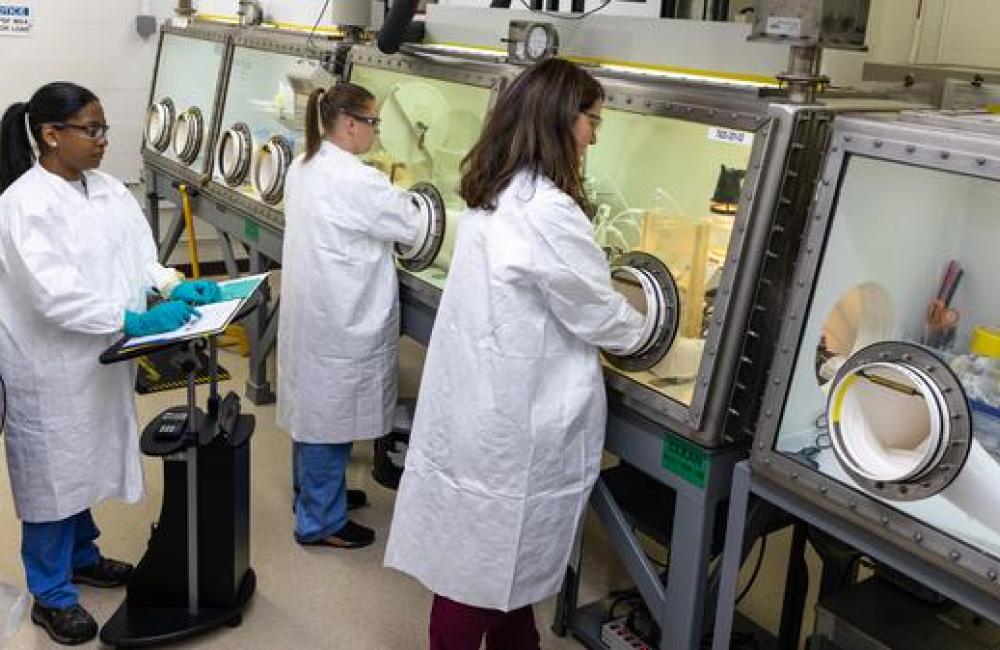Isotope Processing and Manufacturing Division
The Isotope Processing and Manufacturing Division standardizes quality-controlled manufacturing processes for in-demand isotopes, reducing the United States’ dependence on foreign suppliers.
ORNL produces, purifies, and ships more isotopes than any other place in the world — hundreds of isotopes used in medicine, research, industry and space exploration. Over the past decade, ORNL has developed the largest portfolio of radioisotope research, development and production for the Department of Energy’s Isotope Program.
The Isotope Processing and Manufacturing Division was formed in June 2022 to streamline the routine manufacturing of isotopes into efficient, quality-controlled processes. Decades of world-class research and development have made routine manufacturing possible, and ORNL’s unmatched experts and facilities ensure it’s able to meet the nation’s needs for isotopes now and in the future.
IPMD will work closely with research and development to continually improve manufacturing with new advances, once they’ve been tested and approved. This joint effort leverages ORNL’s expertise in both production and R&D.
Areas
The Operations Support Group provides technical and operational support to enable and sustain IPMD processing and manufacturing operations.
The 4501 Operations group is responsible for the purification, dispensing, and shipment of various radioisotopes to support the DOE Isotope Program.
The 3047 Operations group is responsible for the production of various radioisotopes to support the DOE Isotope Program.
The REDC Material Operations group processes materials and products in liquid, oxide, pellet, and target form for programs in development and production at REDC.
The Laboratory Chemical Operations (LCO) group is involved in the manufacturing of radioisotopes for customers all over the world.
The Radiochemical Engineering Development Center (REDC) Hot Cell Operations Group conducts operations within the hot cells of Building 7920, one of the two main hot cell facilities that comprise the REDC.
7930 Operations Group safely handles alpha and neutron emitters and works with some of the most exotic and rare materials on the planet within a Hazard Category 2 nuclear facility that includes hot and cold laboratories, heavily shielded hot cells, glove boxes, and high bay space.

“We’re making medical isotopes that are having a tremendous impact on improving people’s health and well-being. When you receive letters from people whose lives were saved because of an isotope that we’ve made, that’s indicative of the power, impact, and importance of our work.”








